![]()
|
|
|
|
|
Stoke-on-Trent - photo of the week |
Advert of the Week
Potworks of the Week
Walkers' Nonsuch Ltd, Toffee
Manufacturers, Longton
|

Horleston Bros. Ltd. built
their Confectionery Works in Lovatt Street, Longton in 1894
Horleston Brothers also had 'Stall 1' in the Borough Market, Market Lane, Longton
|
Lovatt
Street —Here is Back Lovatt Street— 37-39 Crosby, Georgina, butcher —Here
is Normacot Road— Horleston, Bros., Ltd., Mount Pleasant Confectionery Works, wholesale confectioners. Carter William, Leopard Inn (B.H.) —Here is Normacot Road—
|
|
from: 1907 Staffordshire Sentinel 'Business Reference Guide to The Potteries, Newcastle & District'
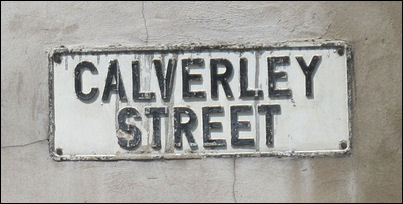
Walkers frontage is in
Calverley Street
originally named Lovatt Street,
renamed to Calverley Street in the mid 1950's

Walkers Nonsuch Ltd,
Registered Office

Walkers' Nonsuch Ltd, Toffee
Manufacturers, Longton
photos: June 2011

the original entrance gate
with the date stone of 1894

Walkers' toffee factory,
Longton
Bing Maps
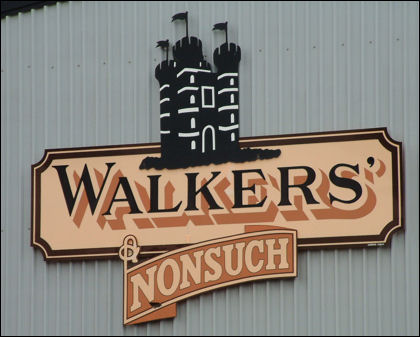
Walker's Nonsuch Toffee with
the castle logo
Walkers' Nonsuch takes its name from Henry
VIII's legendary 'Nonsuch' palace which was described
as the 'palace of all palaces' for its exquisite splendour there was 'nonsuch'
like it.
In the same was Edward Walkers' reputation was as the creator of the most
delicious toffee 'nonsuch' like any other.
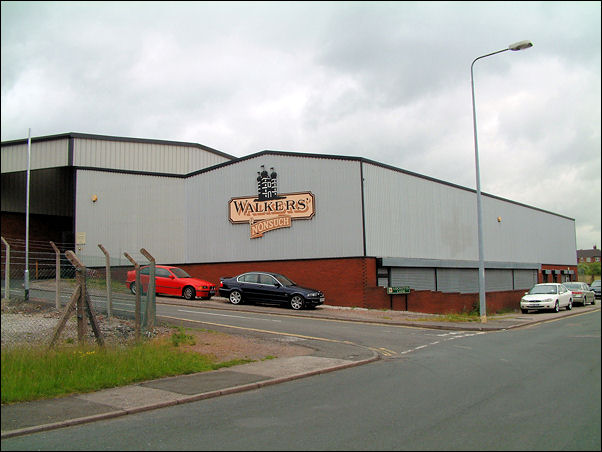
Walkers' warehouse in nearby
Locketts Lane

Tin of Walker's Grade 1
Nonsuch toffee
"Delicious to the Palate"
"Strengthening to the Body"
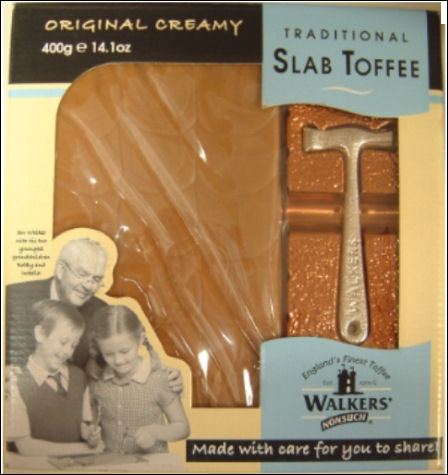
Walkers' Traditional Slab
Toffee - complete with a hammer to break the slab
"Made with Care for you to Share"

Limited edition Nonsuch
delivery vans
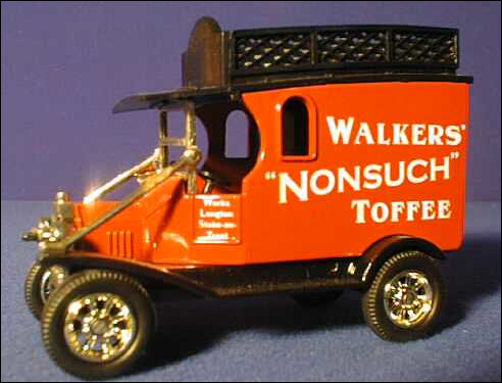
Limited edition Nonsuch
delivery vans
|
Sweet odour in streets was sign of temptation "And 50 years ago there was a good chance that the tasty titbits were made by one of North Staffordshire's own toffee and sweet manufacturers like Walkers' Nonsuch or Old Betty Plant's. Besides these household names, there was quite a list of other local sweet makers – Winton's and O J Moss's in Stoke, Leese's and Siddall's at Fenton, Evans's and Edge's at Newcastle, and Garbutt's at Normacot, to mention only a few.
Although Old Betty Plant's disappeared in the 1970s, the Hanley firm is remembered with affection for products like dairy mints, sugared almonds and herbal cough drops. And there really was an old Betty Plant, according to Hilda Gratton, who worked at the firm for almost 40 years. "The name wasn't made up, as many people think, " she says. "The business was started in Stoke by Albert Plant, who named it after his mother Elizabeth, or Old Betty, who made her own toffee. "Later, the Nadin family from Stockton Brook took over the business and opened the factory in Morley Street, Hanley, around 1914." Like Betty Plant's, Walkers' Nonsuch also started as a one-man business at Longton and is still flourishing as a family concern today after more than 100 years. More than that, the firm can include among its satisfied customers the late Queen Elizabeth the Queen Mother, who praised "your delicious toffee" in a letter of thanks sent on her behalf in 1994.
Edward Victor's son Ian joined him in 1955 after working at the factory during school holidays as "chief bottle washer". "You have to remember that in those days our sweets were delivered to shops in glass jars, not plastic," he says. "We brought back all the empty returns and I washed them." Ian, the firm's long-time managing director, recalls that when he started they made threepenny bars of toffee which were still hand-wrapped in wax paper. However, Walkers were already breaking into the export market. An early sale overseas went to Yemen packed in tea chests, followed by more exports to the Caribbean. John Ekin, who retired this year after 49 years with the company, remembers stencilling the name Barbados on cartons due to be shipped to the West Indies. During his long career John spent some time in the works at a time when materials were put into machinery by hand – a far cry from today's automated processes.
Hilda Gratton, now 91, also learned how to make boiled sweets after starting work at Old Betty Plant's factory in Hanley in 1931.
Old Betty Plant's remained in operation until 1970 when the family-run company was taken over by a confectionery group and the Hanley factory was closed down. Winton's toffee factory operated in Leek Road, Stoke, according to Blurton pensioner Pat Bromley, who says her mother worked there wrapping sweets in the 1920s. "She described the factory as a dilapidated dump with rain falling inside," says Pat. "The workers were allowed to eat the sweets, but they soon got sick of them" The factory was demolished before the Second World War and National Coal Board offices built on the site. Specialist collector and Sentinel contributor Chris Morris has childhood memories of visiting shops in Middleport and scouring the shelves for his favourite sweets.
"It was lovely toffee which made your mouth water, but there was one snag. "If you left it in your pocket too long, the paper bag stuck to the toffee and you had a hard time trying to separate them." " John Abberley
|
|
related pages also see.. Advert
of the Week |